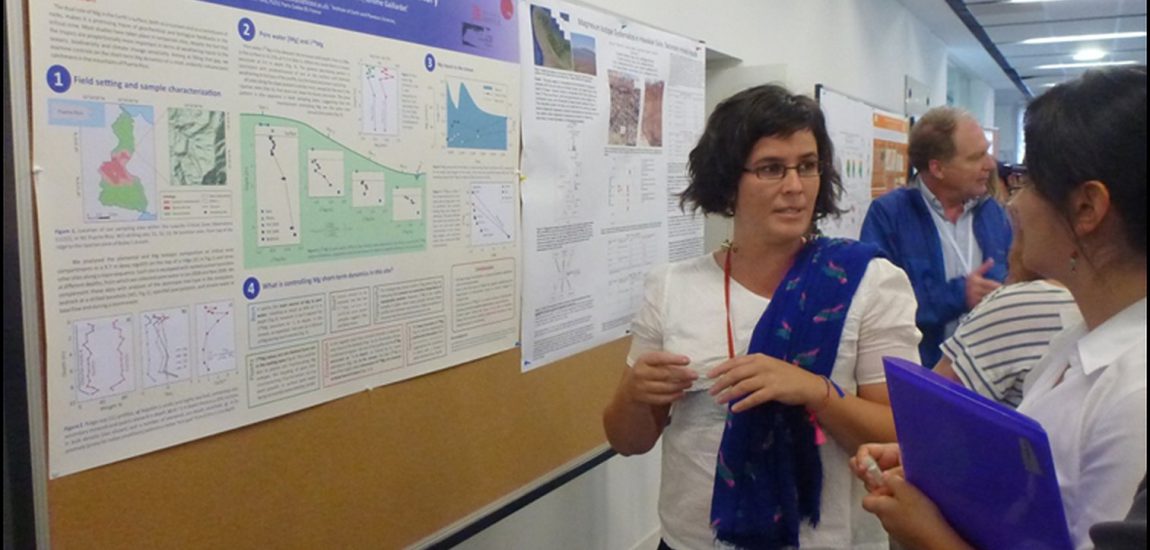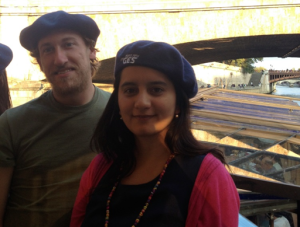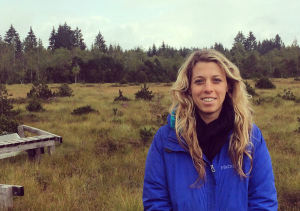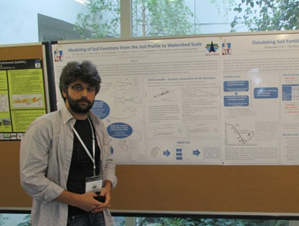
3 students perspectives on GES-10
The Geochemistry of the Earth’s Surface (GES-10) conference took place on 18-22 August in Paris and the EAG proudly supported student attendance by providing grants of 200 Euros per student. Below are the experiences of some of those students.
Thanks to the support from the European Association of Geochemistry I was able to attend the GES-10 conference, a tri-annual meeting that is part of the activities of the Geochemistry of the Earth Surface working group of the International Association of Geochemistry (IAGC). This year the meeting was held in Paris (August 18-22th), organized by the Institut de Physique du Globe de Paris.
The GES-10 conference was placed under the banner of the Critical Zone, the layer of the earth that goes from the aquifers to the top of the tree canopy, and thus included sessions to reflect the complexity and diversity of scales involved in Critical Zone studies: from global landscape change, to nano-scale experiments, and from theoretical approaches to very complex numerical models. Moreover, it was very interesting to hear people coming from such an array of backgrounds, but trying to understand and learn from each other. There were geochemist, hydrologists, biologists, geomorphologists, applied mathematicians and even the relevant, but usually ingnored, points of view from policy makers and a sociologist-philosopher (Bruno Latour).
My research is about stable isotopes and weathering, and nobody else does that in my university, so I spent a great week hearing talks and looking at posters that were all relevant to me. Apart from the subject being specific, this was possible because the format of the conference was very friendly. All participants would attend the talks by invited speakers in the morning, and all the afternoons were devoted to posters. This allowed for really good talks, where the speakers would have time to introduce and develop the issue they were presenting, and even leave time for questions, and for long and productive discussions during the posters sessions.
During my poster presentation I got the chance to talk about my research to some of the leading experts in the area. It was nice to put a face on the names that I just knew from the papers! I also got some very useful comments and constructive criticism that have already been valuable for my understanding of my research questions, and will certainly improve my PhD dissertation.
In general I’m very happy to have attended GES-10, and will look forward to this kind of meetings throughout my career.
About the author

María Chapela Lara is a PhD student at the University of Bristol. She is interested in the cycling of nutrients in the critical zone at a variety of temporal and spatial scales. She is particularly intrigued by the decoupling of deep and superficial cycles that has been found in the thick, highly leached regoliths that develop in tropical regions. To investigate if such a feature is important for Mg, during her PhD she is using major and trace elemental composition and the Mg isotopic ratios of the different reservoirs of a small volcaniclastic catchment in Puerto Rico.
This August, I had an exceptionally enriching experience at the Geochemistry of the Earth Surface-10 meeting. I had the fortune of flying in early to attend the field trip in the Jura Mountains where I learned about the complexities of karst. I am originally from central Texas where karst processes also control the form of the landscape and water resources. However, the scale of the springs and limestone cliffs in the Jura was unlike anything I’d ever seen before. Reculees, or blind valleys, were bordered by steep limestone walls over 200 m tall. The complex hydraulic connectivity and extreme vulnerability of the landscape is well illustrated by the fact that absinthe was detected in the Loue spring after a spill at the Pernod factory 15 km away on the other side of a ridge system.I was also struck by the influence of human activity on the landscape. I learned about the history of salt mining in France by visiting a non-operational brine plant and Salins-les-bains. These activities left a significant mark on the landscape.
Throughout the field trip, we survived the wet weather with a hearty diet of local wines and cheeses. I returned to Paris for the conference and had the pleasure of meeting many geochemists and field experimentalists whose names I had only known through influential papers. I made many important connections and hope to collaborate and continue interacting with the scientists I met. I enjoyed the talks and was flattered to see my work featured. I received valuable feedback on my poster which was titled “Dynamics of rock moisture in a seasonally dry climate.”
Daniella Rempe is a PhD candidate in the department of Earth and Planetary Science at the University of California, Berkeley under the direction of Professor Bill Dietrich. Her research focuses on the controls on the weathering front under hillslopes.
That was a great opportunity! Five days spent in Paris during August, attending to the GES-10 meeting. Scientists from all over the world were there, exposing their point of view on the Critical Zone. Each of the presentations was great, explaining the complexity of Critical zone according to the specific scientific field of every scientist. The multi-scientific composition of this meeting described accurately the complexity of the Critical Zone and the necessity for an integrated and interdisciplinary approach.
In addition to this, a lot of posters were presented with young scientists’ and researchers’ work giving a sufficient view of the current trends in critical zone research. The opportunity also given to present my work and discuss on this with others seems valuable for the next steps.
Moreover, many thanks to the organizers of the conference not only for the scientific part but also for the chance they gave us to “taste” France during the wine degustation “session” and also for the romantic view of Paris through the boat trip dinner in Seine river.
That was a great opportunity given to me through the sponsorship from EAG, to attend the conference, to meet scientists from all over the world and discuss on topics of common interest.


George Giannakis is an Environmental Engineer and he is now working on his PhD on modelling of soil functions at the watershed scale. He works under the supervision of prof. Nikolaos P. Nikolaidis at the “Hydrogeochemical Engineering and Remediation of Soils” laboratory, at the School of Environmental Engineering of the Technical University of Crete (TUC), Chania, Greece.
